At the Patek Philippe Art of Watches Grand Exhibition in New York in July 2017, the star of the show was not one of the priceless museum pieces or a Grand Master Chime, it was a Native American staring from a small pocket watch. The weathered face of the stern yet dignified chieftain was not a life-like painting in enamel, but it was rendered entirely out of tiny pieces of wood. Lines of people waited patiently to briefly gaze at the genius who made this work of art in a section of the exhibition where visitors had the privileged to watch Patek Philippe’s artisans work. Like everyone, I also stared in total disbelief at the extraordinary artistry of marquetry.

Although marquetry has its origins in ancient Greece, and clock cases were richly decorated in this art form during the 17th and 18th centuries, it is a new addition to Patek Philippe’s portfolio of rare handcrafts. Decorating the dial of a watch or case of a pocket watch with miniature wood marquetry was in fact pioneered by Patek Philippe in 2008. What is now one of the most sought-after forms of decoration by collectors, came about almost by accident. Patek had a commissioned a special presentation box for a client by an extremely talented marquetry-maker. Delighted with the result, the company suggested he try his hand on a miniature scale and make a dial for a pocket watch. The craftsman then created the first example of a watch decorated with marquetry – the Black Crowned Cranes of Kenya pocket watch, ref. 982/115 in 2008 below.
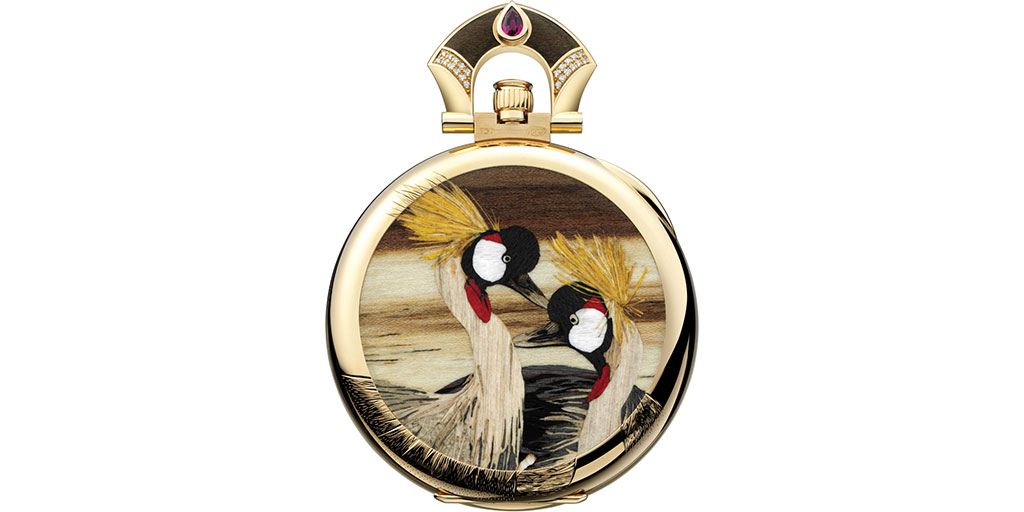
Two years later, he then created the Royal Tiger wristwatch, ref. 5077P below and the rest as they say, is history as a new rare handcraft was born.

To create each miniature work of art, the marquetry-maker first produces a drawing of the picture which is then reduced to the scale of the pocket watch or wristwatch.
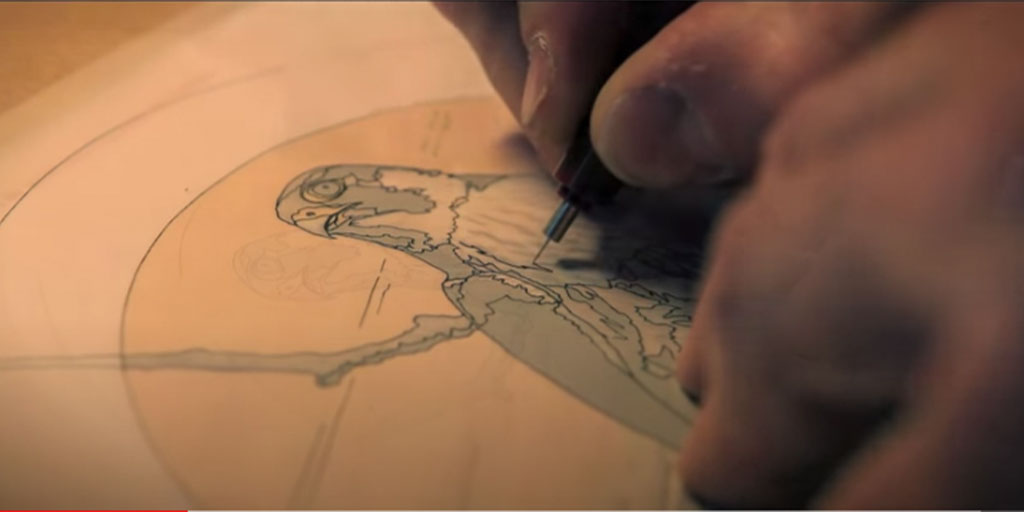
The image is then cut out to obtain a template of each of the tiny parts, even the smallest.

The artisan then assembles a palette of wood veneers from which to work, selecting various colors and textures. For one image, the artisan may work with up to 130 different wood types, selecting from up to 60 or 70 natural tints, not counting the woods that he or she has stained in advance. The principle is always to cut the veneers according to a drawing and then glue them to a base.
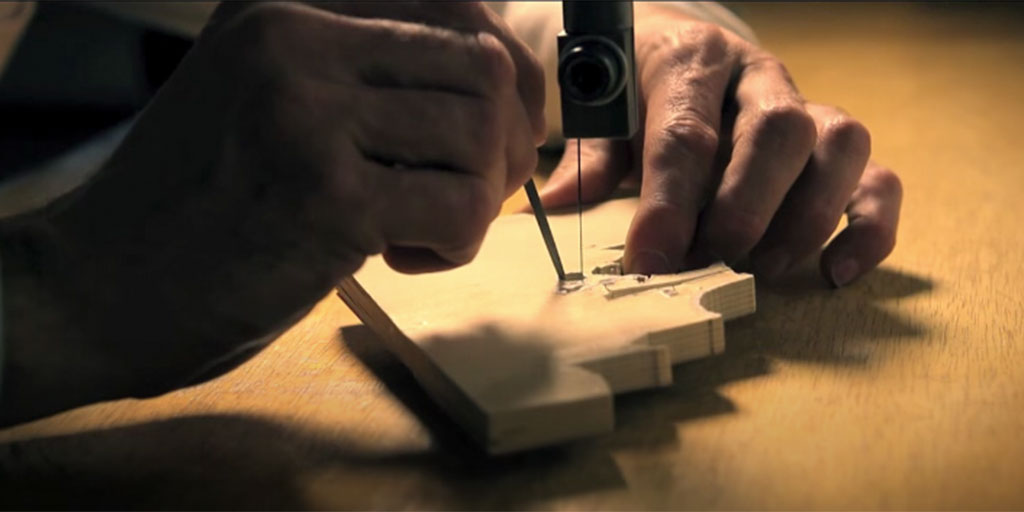
To create each part, 10 sheets of veneer are stacked then cut with a fretsaw or a marquetry-cutter’s chevalet – a sawbuck incorporating a saw with a very fine blade. One piece from the 10, whichever is aesthetically most pleasing, will be selected for the final image.

The assembled pieces are stuck down with hot glue and pressed. To achieve additional shading and a sense of depth, along with the right thickness and a perfectly even surface, several veneers may be superimposed.
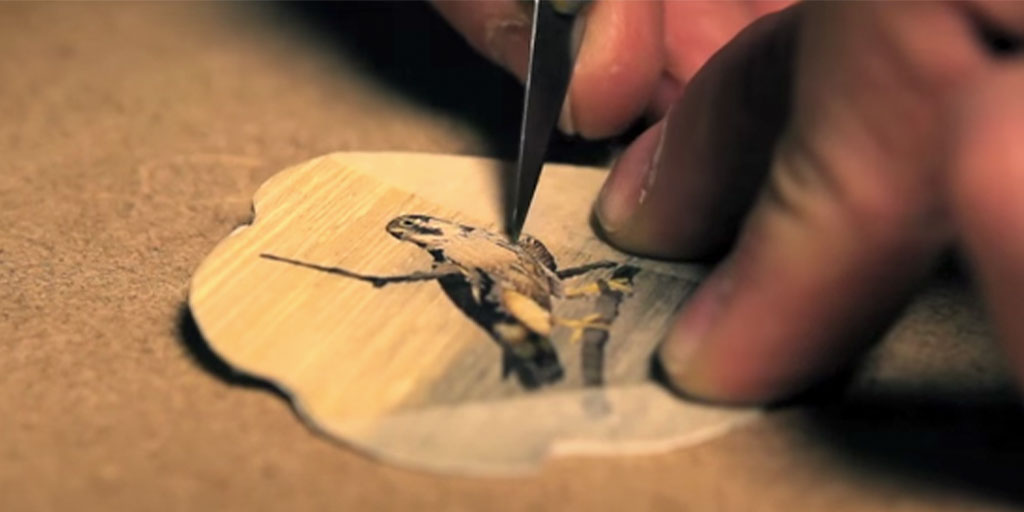
Each panel is just 0.6 mm thick with tolerances of only 0.3 mm which means that sanding could go through the piece and destroy it. The real art is to make the joints between the wood as seamless as possible.

Once the entire marquetry arrangement is assembled, it is fixed to a gold plate, then sanded and varnished to create a perfectly flat surface with a delicate brilliance. To watch the marquetry process in detail, please see this Patek Philippe video.
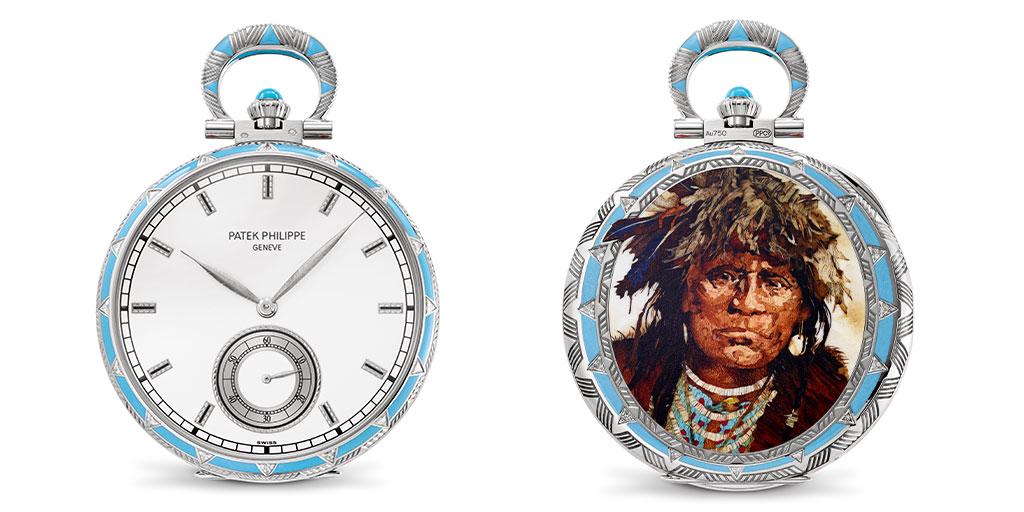
Let’s look at the “Portrait of an American Indian” ref. 995/107G above in a little more detail. To create his extraordinary face, 304 tiny shards from 20 types of wood and 60 different inlay colors were arranged by hand within a circumference of less than three inches. There are 100 different parts in his necklace alone. Surrounding the portrait and the dial of the watch is a geometric pattern of 18K white gold hand-engraving and turquoise set with 32 triangular-cut diamonds.
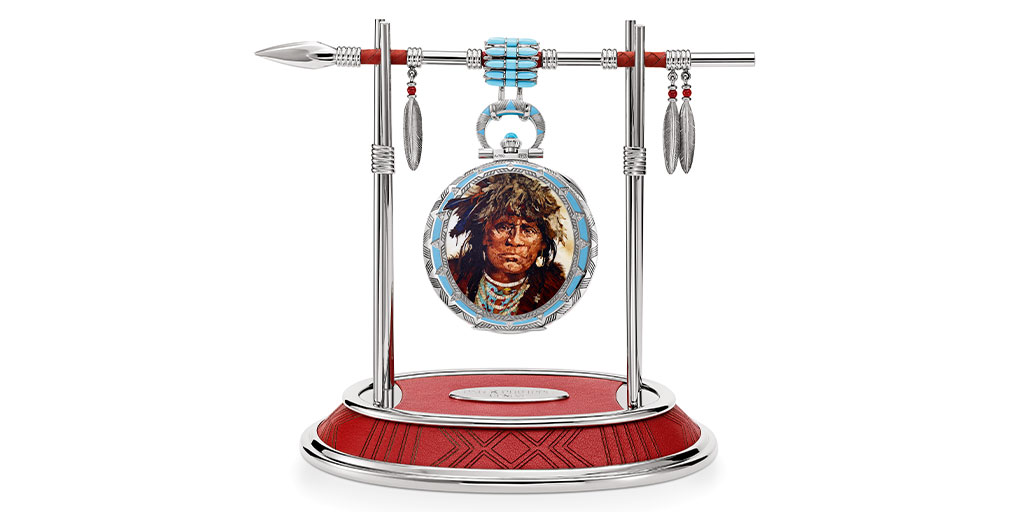
The bespoke watch stand above is equally impressive made of 18K white gold with a spear decorated with turquoise and white gold feathers to hold its dignified treasure.

A marquetry wristwatch depicting a cowboy riding a bucking bronco was also made for the 2017 Grand Exhibition (above). Calatrava ref. 5089G-070 “Rodeo” displays an astonishing wealth of detail. The master craftsman first cut out 318 pieces and 40 inlays from more than 20 different wood types, some microscopically small to create the hands, the spurs, the muscles of the horse and the cowboy’s rope, which is finer than a human hair. Once assembled, the image was mounted on an 18K white gold plate. The 38.6 mm watch is fitted with a caliber 240 ultra-thin, self-winding movement. A limited edition of 10 pieces were made.
Today, only a handful of marquetry-makers work in watchmaking. However, as appreciation for this singular art form increases, its future looks bright, provided that other artisans receive training. A few brands such as Parmigiani, Ulysee Nardin and Cartier have created some marquetry-dial watches, yet none have reached the level to which Patek Philippe is determined to nurture and preserve this rare handcraft.



